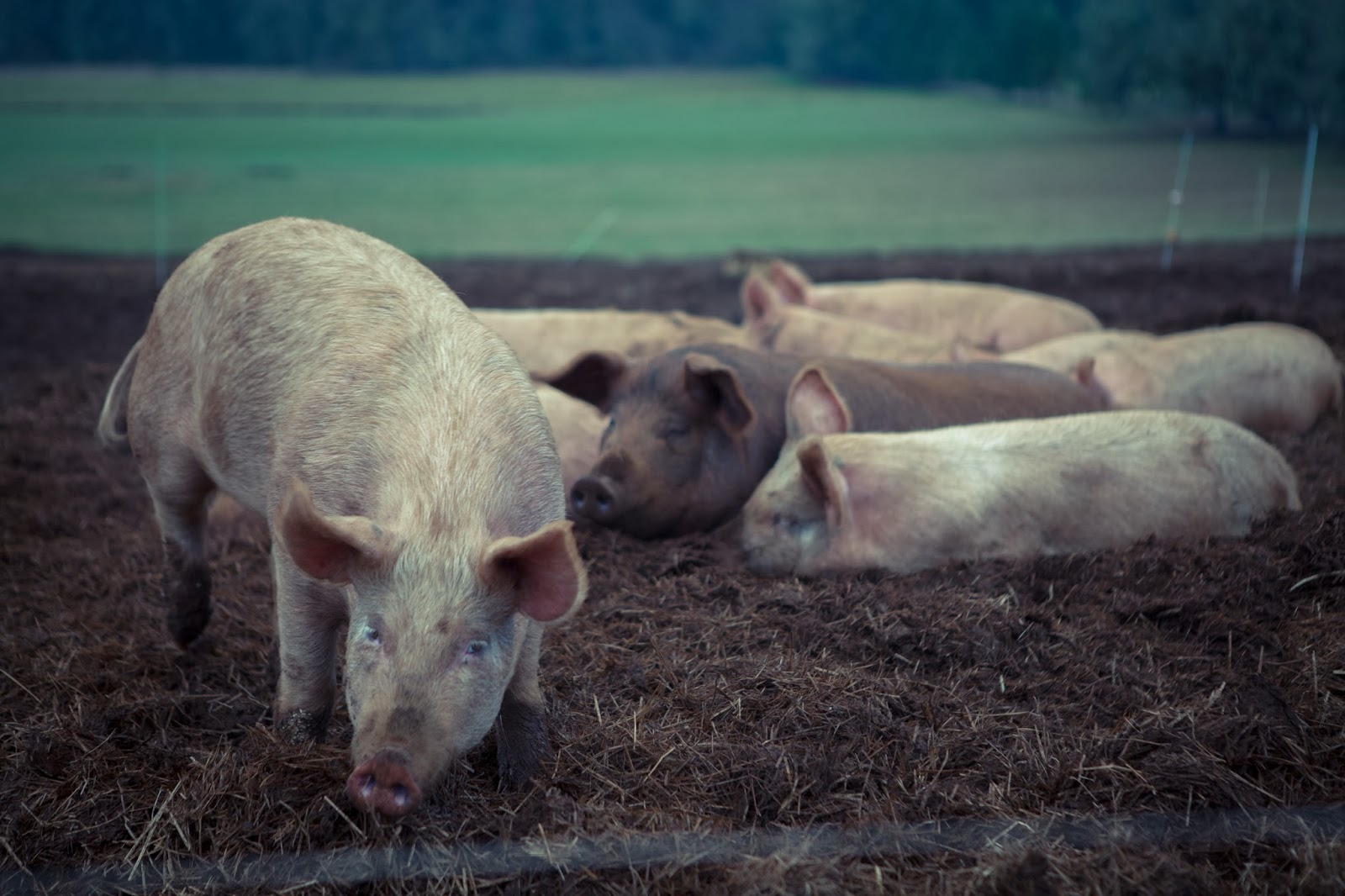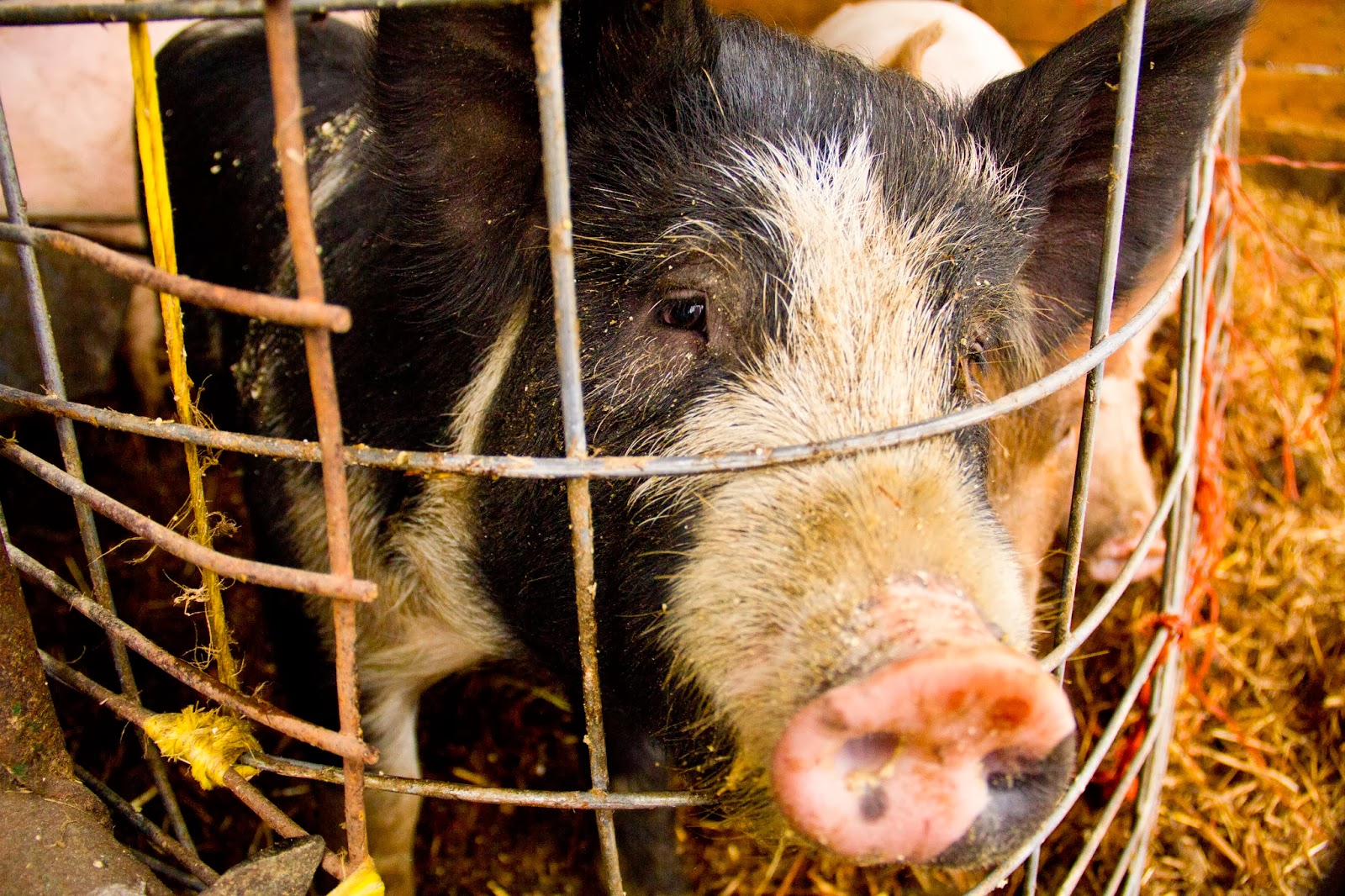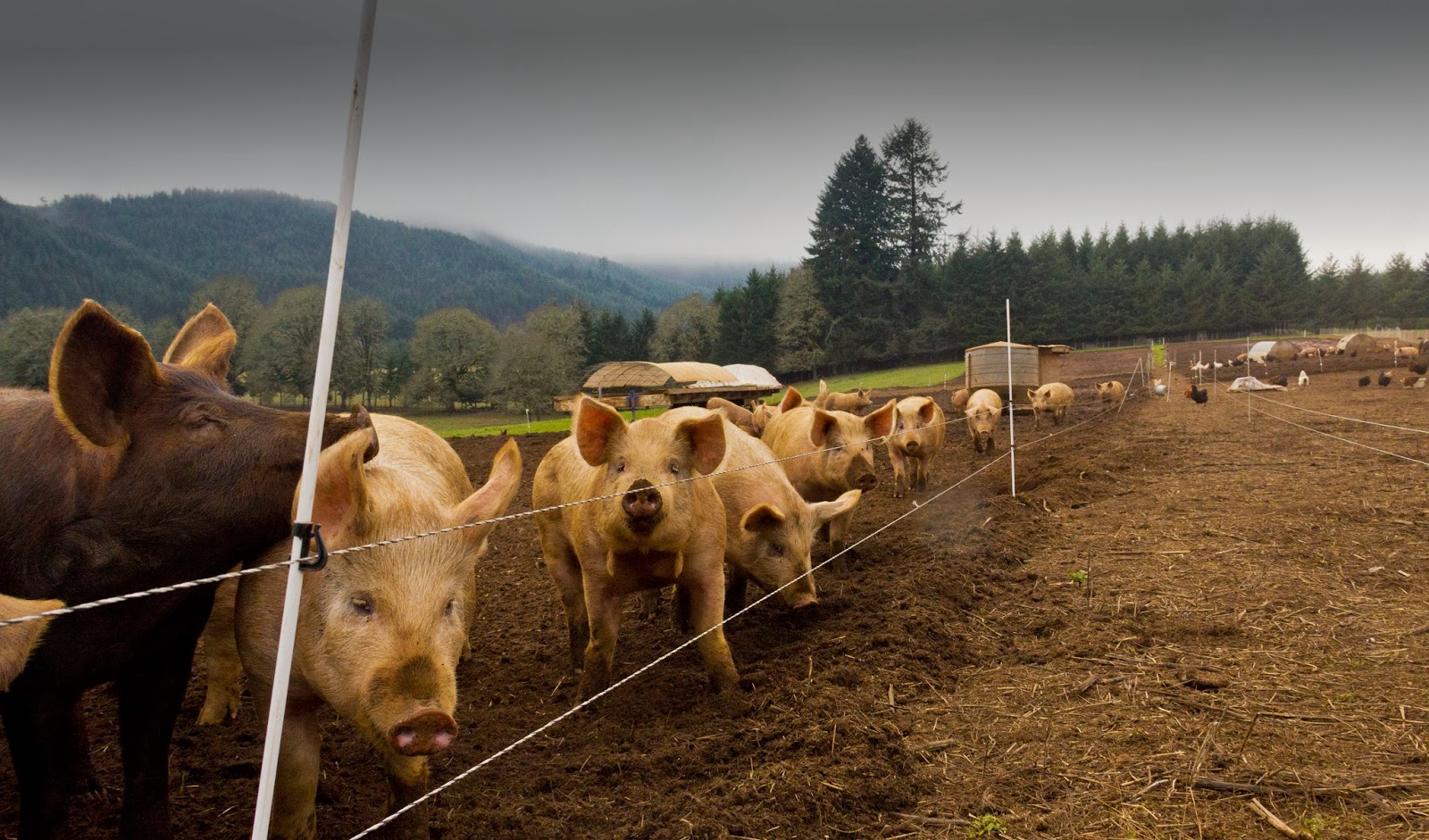"The Earth is not a dead body, but is inhabited by a spirit that is it's life and soul. All created things, minerals included, draw their strength from the earth spirit. This spirit is life, it is nourished by the stars and it gives nourishment to all the living things it shelters in its womb. Through the earth spirit received from on high, the earth hatches the minerals in her womb as the mother her unborn child."
-- Basilius Valentinus
 |
| The pure pleasure of being a pig photo by Katelyn Black |
On the Deck Family Farm, bacon is one of the four main food groups alongside sausage, steak and butter. Before moving on to the farm, I wasn't much for pork and pork-related products, having tussled with a nasty, unforgettable bout of food poisoning at it's hands, but working alongside these animals every day will make you admire their capabilities with undying resolve. Transparency is the key to creating and sustaining a market for earth conscious meats, so I'd like to show you how the Deck Family Farm raises our signature Hazelnut-Finished Pork and give you a little background into the makings of a happy piggy.
 |
Can't beat some fresh hay straw
photo by Katelyn Black |
Upon domestication, pigs were bred and utilized for two different uses: lard types and bacon types. Lard pigs fattened quickly and efficiently for use in cooking oils, lubricants, soap, lamp oil, cosmetics and even explosives, while bacon types grew lean, muscular frames from a diet of grains, garden scraps and dairy by-products -- feeds that are high in protein and low in roughage.
As technology increased and petroleum-based products flooded the market, the lard hog declined in use and farmers began selecting breeds that could quickly turn corn and other cheap feeds into delicious, pork chops the size of your head. Today's swine are the result of years of Dr. Moreau-ian genetic selection to suit our desire for tasty, cheap meat. However, today's industrial pig operations miss out on a few things a pig desires deep down in his/her little piggy heart -- open pastures.
A Hormel or Jimmy Dean raised pig usually doesn't get to see the light of day. Their most valuable asset (their nose) has a ring promptly shoved through it to keep from rooting and their tails are clipped to thwart nibbling due to close quarters. Mother sows are held in gestation pens with little room to move, let alone turn around. Because of this, the meat suffers and most industrial pork is injected with up to 12 percent salt water to make up for lost flavor and tenderness.
 |
| Please don't inject me with salt water. I swear I'll be delicious if you just love me |
 |
| "Finishers" renovating a winter pasture on the Deck Family Farm. Some of these are Yorkshire and some are Red Wattles, while others still are a piggy blend of both breeds. The 'wattles' visible on the necks have no known function. They are a characteristic usually passed on to crossbred offspring. |
 |
The hotwire set-up. Good at keeping hogs in and interns out. Or maybe the other way around..
|
 |
| Saint Filbert, the patron saint of nuts |
 |
| Seasoned intern Sarah Gocek feeding out a bucket of hazelnuts to some eager mouths |
 |
| Fourth down and ten more yards to go. Our linemen work just as hard to get to the endzone, only their salaries are only slightly less inflated. |
Every day, without failure, one of the interns tending the "finishers" feeds them several bucketfuls of hazelnuts and bumps the hotwire up 5-15 feet. This allows the pigs to root around in our pastures to their hearts content, tilling the great soil for us and nubbing any roots or goodies they may find below the earth. It's an incredible process that benefits the pig, the land, the farmer and the pork.
 |
| These paddocks were finished by the hogs in November. The pigs worked day and night tilling the soil for us, never charged overtime and provided us (and you) with plentiful pork when it was all said and done. In the spring these will be planted with an annual rye grass and another grain crop providing us with reliable feed for our animals. |
I'd like to mention as well that this is our strategy for wintering the pork. Because of the rainy Oregon winters and the hogs' impact on fragile winter pastures, we choose paddocks for them that are well-drained highlands over soggier, sunken pastures that would be nearly destroyed by the pigs impact.
For this reason, the wintering paddocks will rotate semi-annually. After the pigs renovate a paddock, we'll follow with an annual crop such as triticale, turnips or cara wheat to stabilize the soil. The paddock pictured above was planted in sunflower and wheat. In the fall, the chickens tore through it, reveling in fresh sunflower seeds and wheat grain. Most of the wheat fell of the stalk, replanted itself and provided yet another bump of feed for the chickens in the form of wheat sprouts making our chickens healthier than most vegan, gluten-free hippy conform-ovores.
 |
| When the weather cooperates, we're going to graze the pigs through the garden. They'll knock down all the sunflower stalks and other vegetable matter that would take much longer to compost, till the beds for us, and add fertilizer out the back end. |




